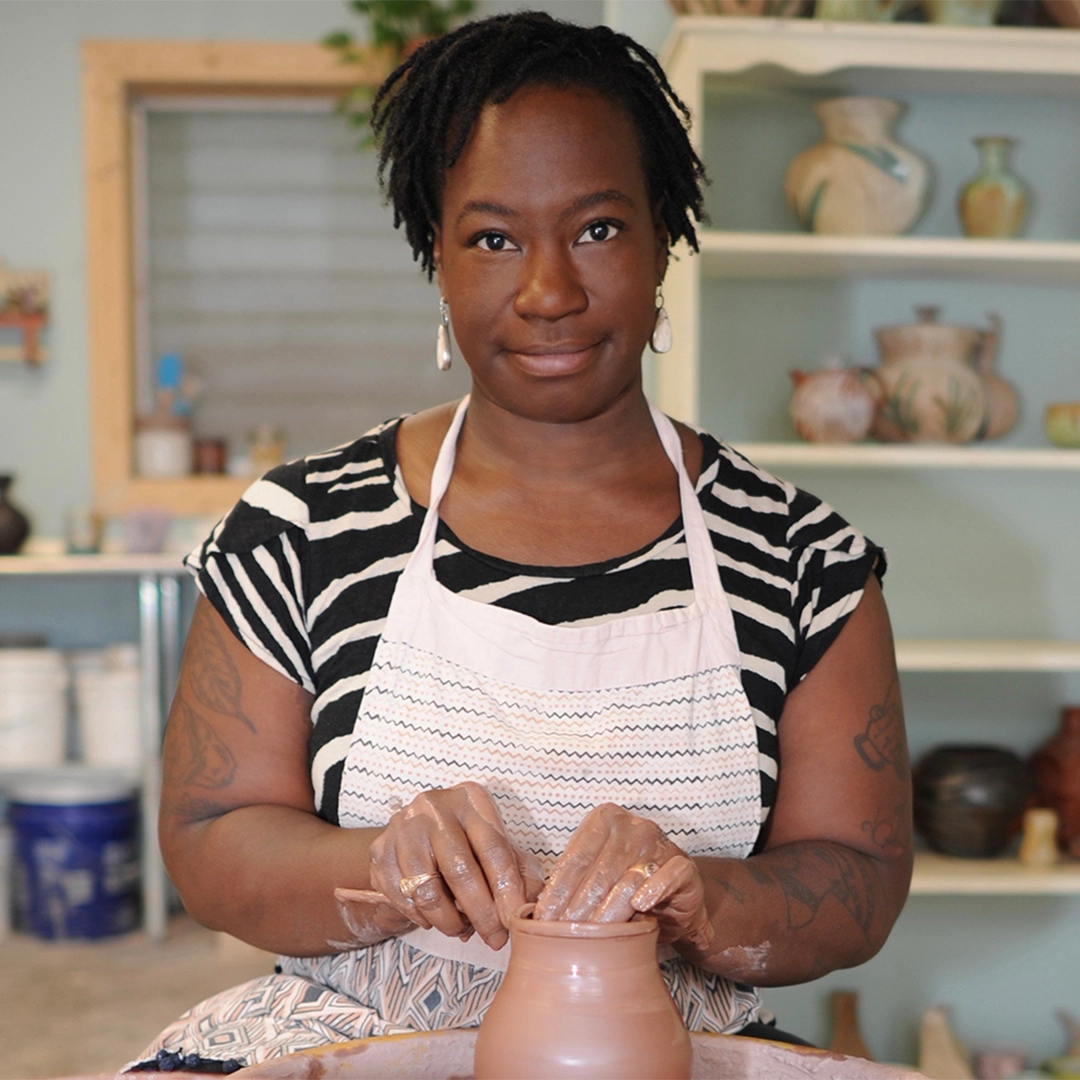by The Editors | January 21, 2022
Finding Beauty in the Abstract at the Rollins Museum of Art
A new exhibit at this Winter Park museum explores the stories behind lines, colors and shapes.

Sometimes it’s easy to overlook the beauty in simplicity. The way the sun slices bright lines through the treetops on a sunny day or looking out the window of an airplane to peer down at the homes standing like soldiers in neat rows and grids. The lines, colors and shapes that turn the world around us into a masterpiece are rarely given more than a glance, but in a new exhibit at the Rollins Museum of Art in Winter Park, these simple phenomena take center stage.
In Line, Color, Shapes, and Other Stories, visitors get the chance to explore the museum’s collection of abstract art spanning from the early 20th century to 2013. The 17 works pulled from the Rollins Museum’s permanent collection all use geometric abstraction to explore the artmaking process. Visitors won’t find any Edgar Degas paintings of ballerinas at the barre or sculptures of Greek gods posing in triumph at this exhibit. In fact, they won’t find any figures at all. Instead, they’ll enter a world dictated by the satisfaction of a straight line, the mingling of shapes and the dueling of colors on canvas, sculptures and prints.
“It may be challenging for some viewers to relate to an image or an object that doesn’t have figures or recognizable symbols or overtly displaying the story,” says Gisela Carbonell, the museum’s curator. “So what I would say is that works of art tell stories in different ways.”

One artist, Monir Shahroudy Farmanfarmaian, found inspiration for her work in Iranian mosques. Enthralled by the way light danced off the mirrored mosaics in the Shah Cheragh Mosque in Shiraz, Farmanfarmaian began creating geometric shapes reminiscent of the mosaics using shards of mirror and glass. In Line, Color, Shapes, and Other Stories, museumgoers can find her piece Second Family – Triangle and step into that shimmering moment in the mosque for themselves.
Other artists, like Carmen Herrera, don’t want viewers to try and dissect meaning from the work at all. “There is nothing that I love more than to make a straight line. How can I explain it? It’s the beginning of all structures, really,” Herrera once said. Standing in front of the two Herrera paintings displayed at the new Rollins Museum exhibit, viewers have no choice but to admire its simplicity—how straight lines draw ever closer until they kiss on the edges of the canvas.
Even if visitors don’t immediately see a story in a work, there’s often one being told off the canvas. Given the abstruse nature of the art, Carbonell prepared extended labels for nearly every piece in the exhibit so viewers have a text companion. There, visitors can dive into the stories of the artists themselves.
There is nothing that I love more than to make a straight line. How can I explain it? It’s the beginning of all structures, really.
— Carmen Herrera
Carmen Herrera, now 106 years old, spent most of her life as an artist living in obscurity. While her male counterparts enjoyed attention from galleries and museums, Herrera didn’t sell her first painting until the age of 89. Another featured artist, Felrath Hines created paintings in response to the Civil Rights Movement in his early career but later turned his focus to hard-edge abstraction, pushing back against the idea that Black artists must make art about their identity.
Like their creators, the works are layered. All can be appreciated at face value, admiring the slant of a line or the pulsing neon color on a canvas, but they’re also an invitation—a gateway to the narrative beyond the sculpture or the brushstrokes.

A deeper way to experience Line, Color, Shapes, and Other Stories is to look at it in dialogue with the neighboring exhibit at the Rollins Museum of Art, From Chaos to Order: Greek Geometric Art from the Sol Rabin Collection. Although the 57 objects featured in this collection are from the Geometric Period (900–700 B.C.), viewers will likely notice a similarity between these Greek works of art and the ones in Line, Color, Shapes, and Other Stories. Despite being from different eras, both exhibits demonstrate the universality of lines, colors and shapes in the artmaking process and the makers’ desire to use these tools to create order and balance in an often-chaotic world.
“One of the things that I would love for visitors to take away is that just like there are many types of realism in art, abstraction cannot be defined in just one way,” Carbonell says. “I hope that when visitors come they can explore the nuances of geometric abstraction.”
For those who want guidance navigating the nuances, Carbonell will lead a tour of the exhibit on March 4 at 11 a.m. and a tour in Spanish on February 8 at 6 p.m. rollins.edu/rma
Banner image: Larry Zox (American, 1937 – 2006) Green Composition, 1973
Linocut lithograph 21 x 36 in. Gift of Eugene Ivan Schuster. 1991.23.22
© 2021 Larry Zox / Artist Rights Society (ARS), New York





